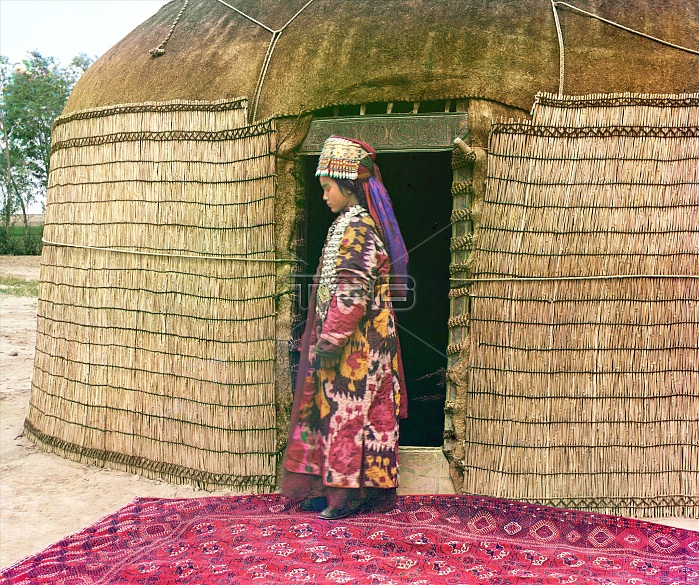
Full-length profile portrait of a woman, possibly Turkman or Kirgiz, standing on a carpet at the entrance to a yurt, dressed in traditional clothing and jewelry, between 1905 and 1915. Ethnic Diversity: Profile of a Nomad. In this portrait, Prokudin-Gorksii captures the traditional dress, jewelry, and hairstyle of an Uzbek woman. A yurt is a portable tent used for housing by the nomadic peoples of Central Asia. After conquering Turkestan in the mid 1800s, the Russian government exerted strong pressure on the nomadic peoples to adopt a sedentary lifestyle and settle permanently in villages, towns, and cities. Russian chemist and photographer Sergey Prokudin-Gorsky (1863-1944) was a pioneer in colour photography which he used to document early 20th-century Russia and her empire, including the vanishing way of life of tribal peoples along the Silk Route in Central Asia. In a railway-carriage darkroom provided by Czar Nicholas II, Prokudin-Gorsky used the three-colour photography process to record traditional costumes and occupations, churches and mosques - many now Unesco World Heritage sites - as well as modernisation in agriculture, industry and transport.
| px | px | dpi | = | cm | x | cm | = | MB |
Details
Creative#:
TOP29697744
Source:
達志影像
Authorization Type:
RM
Release Information:
須由TPG 完整授權
Model Release:
Not Required
Property Release:
Not Required
Right to Privacy:
No
Same folder images:

 Loading
Loading